“I don’t want to learn to read!” he cried and and broke down into a puddle of tears.
It was then, I realized that I’d been pushing my second-born too hard. I wanted him to keep up with the pace of his older brother (mistake #1).
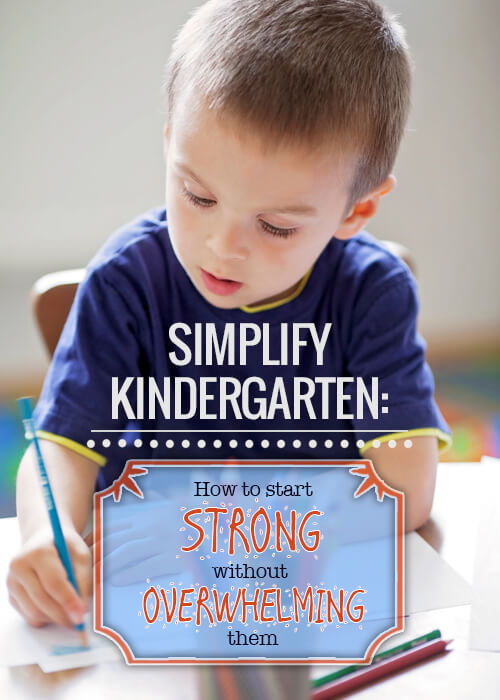
At 5 years old, Cameron had just begun reading a little bit. He just wasn’t interested. He didn’t understand why he couldn’t spend his time romping around with his 2-year-old brothers and spend his day playing.
I made some big mistakes. I learned right then and there, that it was time to back off.
5 Steps to a Balanced Kindergarten Education
We all want our kids to flourish academically. We desire them to have a love of learning. It can be a trial for those of us *ahem* who might be a little bit of academic overachievers ourselves to find a balance of challenging our kids and giving them space to mature.
It’s possible. You can give your kids a great start without it becoming a power struggle. You can start strong without every day ending in tears.
1. Don’t Let it Become a Race
When should formal lessons begin with kids? 4 years old? 5? or maybe 6? The answer: it depends.
So many parents allow school (and other milestones) to become a race. It can become all about who reads first and whose child knows how to write all the letters of the alphabet or count to 100. Don’t let it become a race.
Your child will do all of these things when they’re ready. The development of young children and when they’re mature enough can vary quite a bit.
My first-born son was reading early, at 4. But writing…oy. That is a different story. He struggled with handwriting. My second-born son loved learning to write letters and numbers when he was 4, but reading came a bit later. He started to read a little at 5, but has really blossomed this year at 6.
Remember, it is not a race. Challenge your Kindergartener, but follow his or her lead. If every lesson is ending with a melt-down, it probably means it’s time to slow-down and back-off.
2. Keep Lessons Short
Most young children don’t have a long attention span. It can be hard to keep them sitting (or standing) at a table for long. It’s important to keep your lessons short and break up longer ones into multiple sessions.
Most research claims that the average attention span of a child is 3-5 minutes per year year of their age. So, if you have a 5 year old they likely will be able to sit and pay attention for approximately 15 – 25 minutes.
What does this mean? Hopefully, you figured out this means you can’t plan hour long lessons with no breaks. Some children who are academically more mature may be able to handle more challenging lessons. Even if they are, be sure to break up your academic instruction with play-time, snacks, and activities.
3. Keep Lessons Fun
Nobody wants school with their 4-, 5-, or 6-year-old to become so burdensome that it ends in tears. At this age, kids need to be using their imagination and having fun. At this age, you want begin to breed a love of learning in your kids.
If lessons become too tedious, too much work, and downright boring, your kids won’t enjoy it. Find a program and books that your children can have fun with. Make sure there are a variety of different types of activities.
If your child has an interest in a specific topic, take some time to investigate it with him or her. Encourage their natural curiosities! Show your young children how much fun learning can be.
4. Integrate Subjects
If you’re a busy mom homeschooling multiple children (or even just one child), you know time can often be short. Trying to keep up with what my 10-year-old and 6-year-old are doing for school and keep the twin 3-year-olds busy and happy can be a challenge—to say the least.
I’ve found that doing as much as I can to integrate subjects can help decrease the stress levels of everyone in the home. This is true not just for the littles in my home, but for my older children as well. Below are just a few ideas on how to do this:
- Read-alouds or books they read to you with an emphasis on history, science, or Bible themes.
- Vocabulary can be integrated while reading any books. As you come across unfamiliar words talk about what they mean. Look them up in the dictionary and discuss how words can have multiple meanings.
- Writing essays (as they get older) on topics they’re learning about in other subjects.
- Using Bible verses, or other material they’re memorizing, as the basis for their handwriting practice.
5. Choose a Curriculum that Does All of This
Of course, for your little ones, you can certainly do school without a formal curriculum. But if you’re like me, you might like the structure a curriculum provides. I like having step-by-step instructions and daily lessons to follow. Look for a curriculum that encourages short lessons, has fun activities built-in, and integrates subjects.
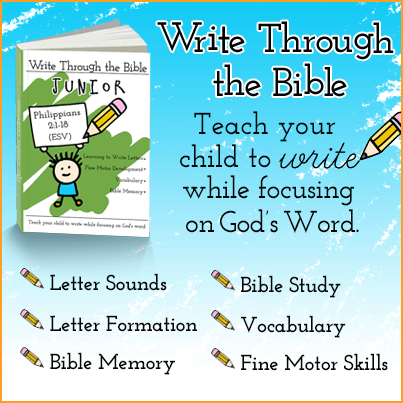
- Improve fine motor coordination
- Learn letter sounds
- Learn how to form letters
- Learn new vocabulary words
- Memorize Philippians 2:1-18
- Study Philippians 2:1-18 and learn what it means to have a heart of humility.
You can do all of this in about 15 minutes a day. Perfect for the average Kindergartener! There are 2 worksheets your child will complete every day. One is a handwriting page where they’ll be learning to write letters. The second, is an activity page that will promote fine-motor coordination in your young children.
If you’re not a uber craftsy mom, like me, you’ll be happy to know that this program doesn’t require a ton of crazy materials. You’ll likely be able to complete the lessons and activities with supplies you have sitting around your house already. And there is virtually no prep work!
This full-year program is very affordable costing just $19 for the digital download or $25 for the full softcover book.
Looking for more info? You can get all the nitty-gritty details on Write Through the Bible, Junior here.

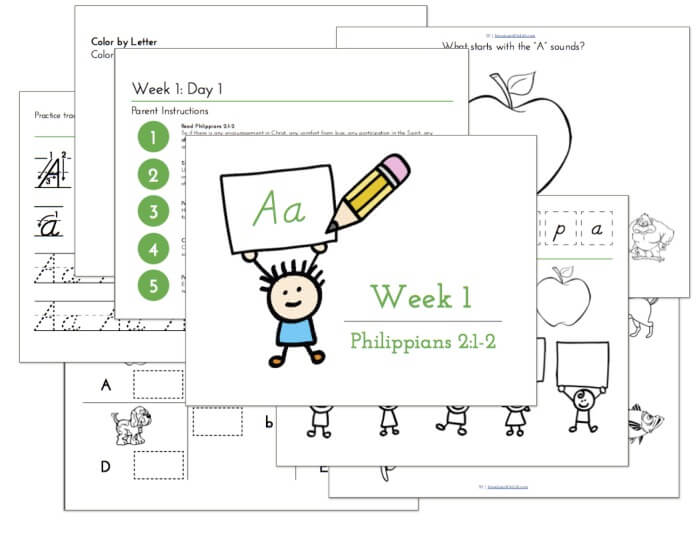
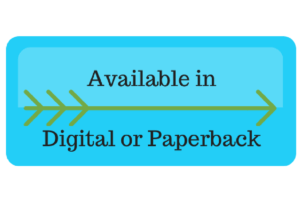
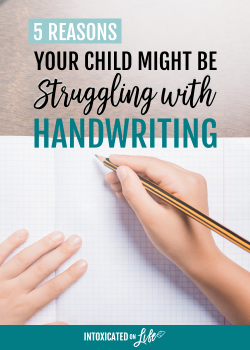
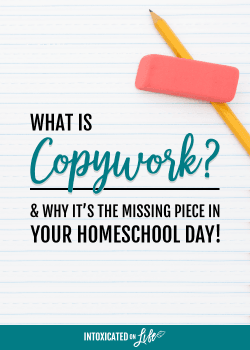


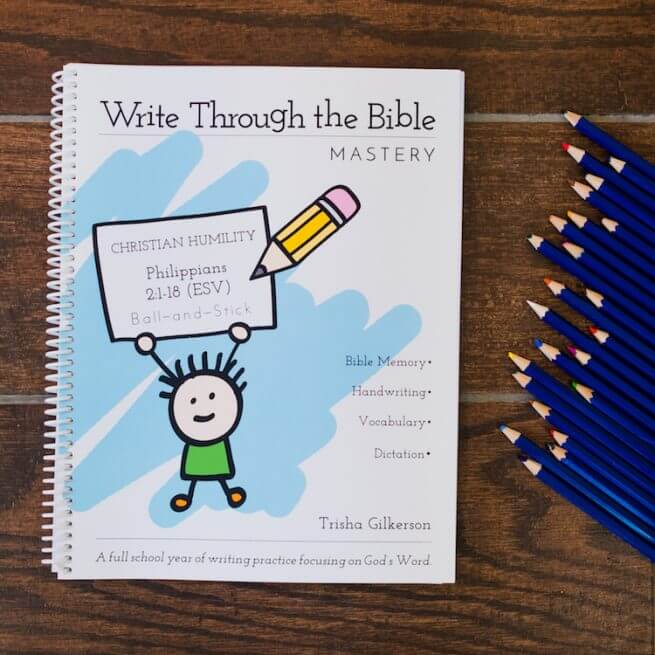
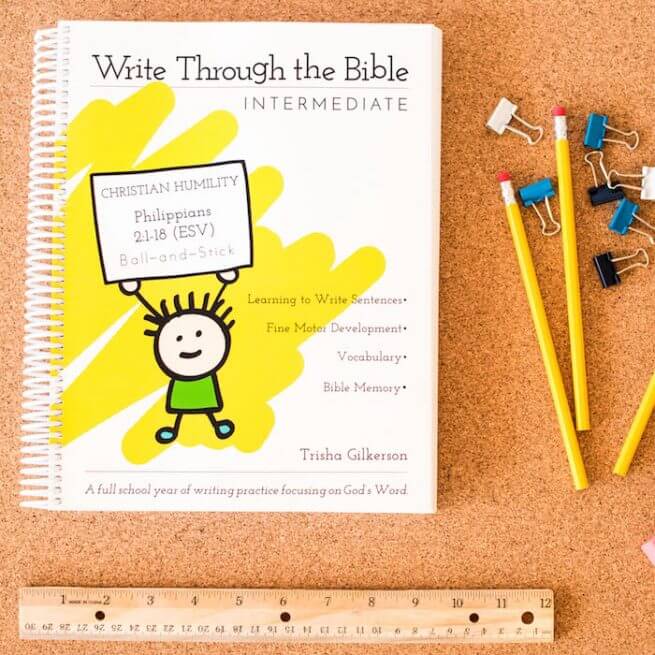
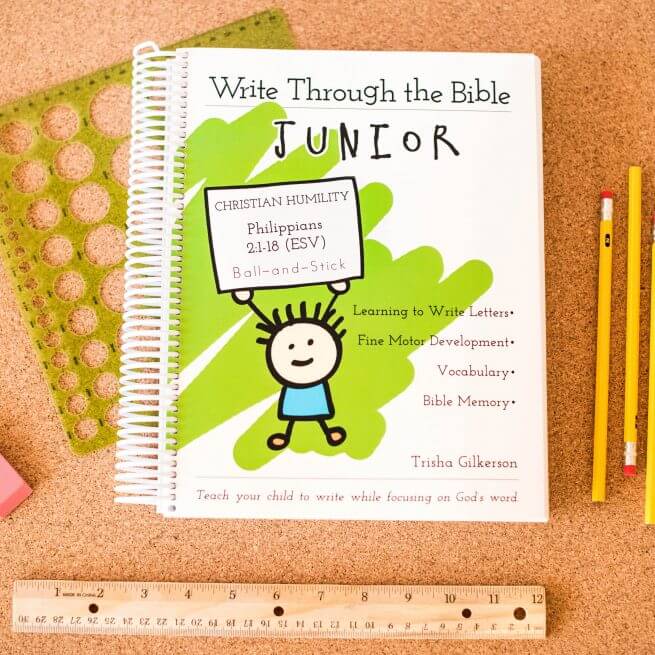
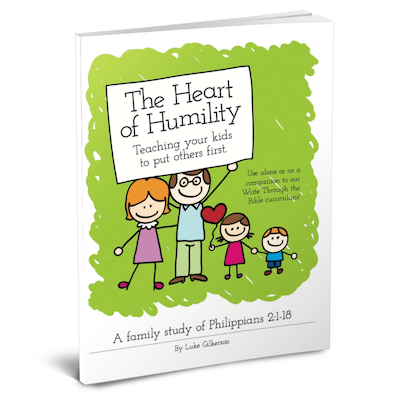

It is SO difficult to break that race mentality. My son has zero interest in handwriting and his behind the kids (despite being the middle in age) when it comes to handwriting in our preschool co-op group. I have to constantly remind myself that he will write when he is ready and forcing it will do more harm than good.
It really can be! It took my oldest son quite a while to write, and it’s still not his strong suit. But he had other strengths. Like you said, we just have to remind ourselves that our kids will get there eventually. 🙂
What font does the paperback version use for writing?
There are three versions: a ball-and-stick font, D’Nealian manuscript, and D’Nealian cursive.